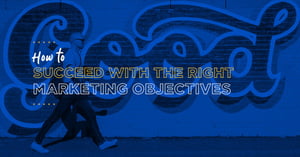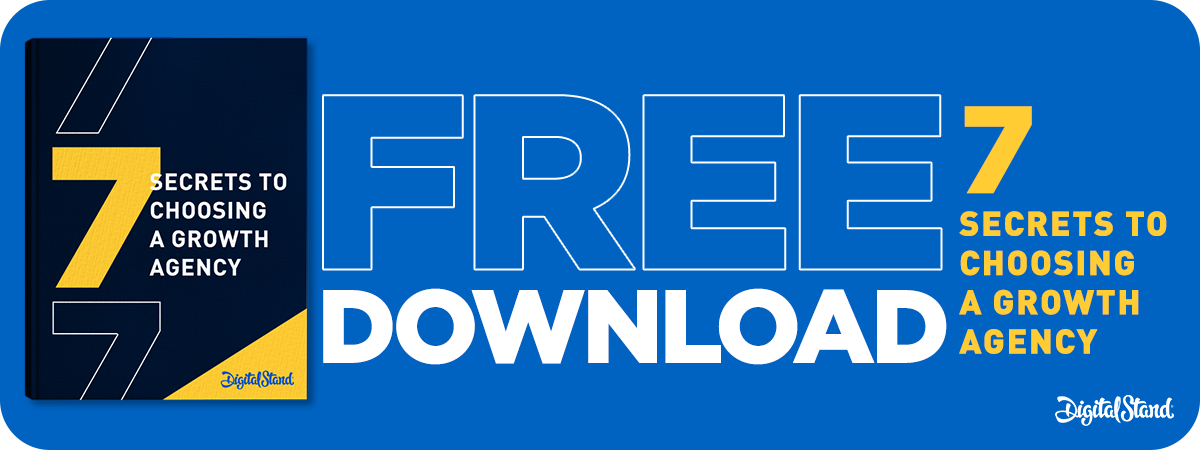Marketing objectives may vary depending on what your company is trying to achieve. Ideally, the best marketing objective examples should align with your digital strategy. KPIs that help you know if you are on track to achieve the set objectives.
Revenue is the lifeline of every business! The digital marketing strategy of most companies focuses on revenue driven by marketing. Below are some of the marketing objectives examples that you should incorporate in your marketing plan when you set your goals:
Increase lead quality
One of the marketing objectives of any forward-looking marketing team is to increase the chances of closing more deals. When you attract higher quality leads, you make it possible for your sales team to close more deals. To achieve this, you need to focus your KPIs around specific initiatives that help you identify and deploy quality leads. The following KPIs will help you track your lead quality:
- Increasing the conversion rate on the website.
- The quality of the website visitor based on the number of marketing qualified leads.
- The number of Marketing Qualified leads passed on to sales.
- The number of Marketing Qualified leads that become Sales Qualified Leads.
- The number of all closed deals that you can associate with the marketing efforts
Shorten the sales cycle
One of the critical objectives of marketing is to shorten the sales cycles of products or services you are promoting.
An ideal marketing plan should deliver consistent messaging and branding that helps you make more sales.
The KPIs for this goal can be enablement materials such as new product pages, blog posts, videos, social media content, and lead nurturing.
There are three areas where you can leverage acceleration of the buyer's journey to shorten the sales cycle.
TOFU - referred to as the top of the funnel, or the commencement of the buyer's journey. This part of the funnel can often be referred to as building brand awareness. It is where you want to reach as many potential buyers of your product or service as possible.
However, you do not want to waste efforts or financial resources on market segments that are not interested in your product or service.
There are several ways and or approaches you can use to maximise your efforts and minimise your expense in this area.
- Make sure you have set up tracking pixels on your website for Google, Facebook, LinkedIn, and Twitter. You might be saying my clients are only on LinkedIn or Facebook. However, this thinking is wrong; your potential clients are online! So tracking your audience across all the social platforms makes sense.
- Create audiences that are matched to your website traffic on all fo the social media platforms. This way, they will likely see any advertising you do.
- Create look-a-likes from these audiences, allowing the social platforms to model the data you have provided. They will then find you a similar demographic who is interested in your product or service.
All of the above can be done without ever capturing an email address. Of course, this a TOFU exercise, of which point it is to identify customers interested in your product and get their information.
MOFU - referred to as the middle of the funnel. This stage in the buyer's journey is probably the most complicated piece of the puzzle. In this stage, you rapidly accelerate your thought leadership capability. You will do this by using unique positioning to move contacts from aware to interested.
There are some simple ways this can be done with the use of content and specific marketing campaigns. To reduce time frames in this stage, you can send the contacts you have identified.
- Subject matter e-books
- Case Studies
- White-papers
- Videos
- Testimonials.
If you are tracking them on social media, as discussed above, you can also run advertising campaigns. You can specifically target this audience with the above offers. One key thing we do for our clients is to run a parallel advertising campaign at the same time we send an EDM to that database.
This does wonders for their open rate and engagement.
BOFU - By this stage, the lead knows your company, what you stand for and the work and projects you have completed. If on the other hand, you are e-commerce business, they understand what you sell and if it is of interest to them.
In this stage, this is where you can further increase customer acquisition, and reduce time to purchase.
From a B2B perspectivef, you may do things like offer:
- A free assessment
- Free trial of your product
- Free market evaluation comparison
All designed to engage and close sales.
And from a B2C point of view, you may offer a coupon code, free delivery, a limited time offer for the first purchase and or equivalent.
At the outset of this program, you may have identified that it was taking 90 days to move a buyer form awareness to the decision stage. By implementing these changes, you have reduced the average sales period by ten days. In turn, you have materially increased the profit of your business.
Increase in customer lifetime value
Marketing plans should focus on increasing the amount that customers spend on a given product or service. To provide more value to the existing customer base, and to grow your share of wallet.
Increasing lifetime value is one great way to increase sales/profit. Your existing customers know you and more likely to buy from you given the right incentive.
The KPIs that help you track this objective should focus on the activities that help your team engage your existing customer base. For example, you can use related KPIs such as the percentage increase on average client spend and X attendees to client webinar.
With the key performance indicator being an increase in customer/client spend.
Reduce the percentage of lost sales/deals
Marketing can impact the percentage of lost sales and deals that can be won or lost. Marketing efforts should set the tone for prospects coming to sales, or conversion rates.
Either setting the right expectations for sales to change course and still close the deal. Or make adjustments in the online journey to reduce drop-offs.
KPIs for this objective should include the metrics that reduce cart abandonment rates or deal loss.
Other related KPIs that you can use for this objective include
- The number of sales enablement materials
- Training programs launched
- Decrease in shopping cart abandonment percentage.
Building a funnel and increasing market share is not without challenges. So you do not want any deals to fall through the cracks because this stage has not been considered.
Promoting a new product or service
A new product or service needs a lot of marketing focus to improve awareness and demand for it. The goal is simple enough, driving new leads or sales. Each of the buyer's journey stages listed above need to be accounted for and considered.
The fastest way to accelerate sales for this objective is to market to audiences already interested in your product or service.
This can be done through:
- Interest-based targeting on social media platforms.
- Up-selling or cross-selling to existing customers.
- Creating social and digital content that supports awareness around the product or service.
The primary goal is to achieve the desired effect and sales. Your marketing efforts should be aligned with the strategies that deliver this end game.
The KPIs that will help you achieve this objective includes:
- The number of impressions of a post on social media platforms
- The number of opportunities that have been created for new products
- The number of mentions of new product on the social media platform
- The number of enquiries or purchases from existing customers
The right marketing objectives are about driving more qualified traffic to your product or service. The end game is more leads and sales.
Because it is a useful marketing tool, traffic should be monitored as an indicator of the objectives' success.
Achieving your marketing goals internally or with a partner comes down to selecting the right objectives. Monitoring the data and looking for opportunities to shorten the sales cycle.
Since 2013 we've been helping brands grow through social media advertising and inbound marketing and hit marketing objectives. We are headquartered in Sydney but run campaigns both nationally and globally.
If you are interested in a no-obligation free consultation to see if we may be a fit for you, then we will be happy to hear from you.
If not, please download the free white paper below and hopefully, and we can connect at the right point in time.

.jpeg?width=200&height=200&name=pexels-mikhail-nilov-6893349%20(1).jpeg)


.jpeg?width=318&height=135&name=pexels-cottonbro-studio-4065876%20(1).jpeg)






